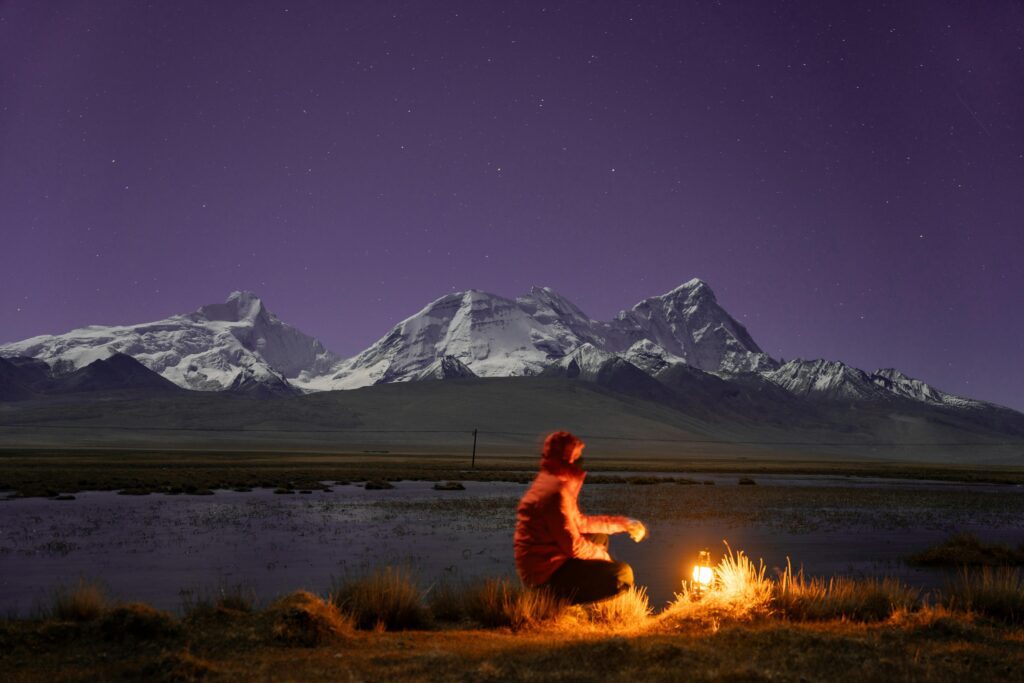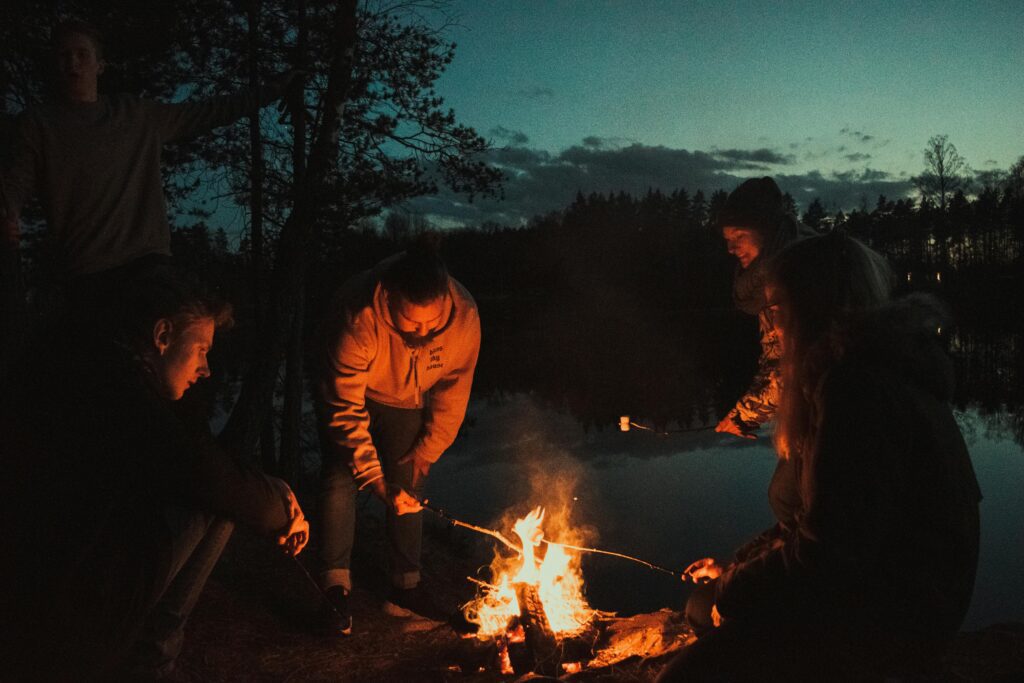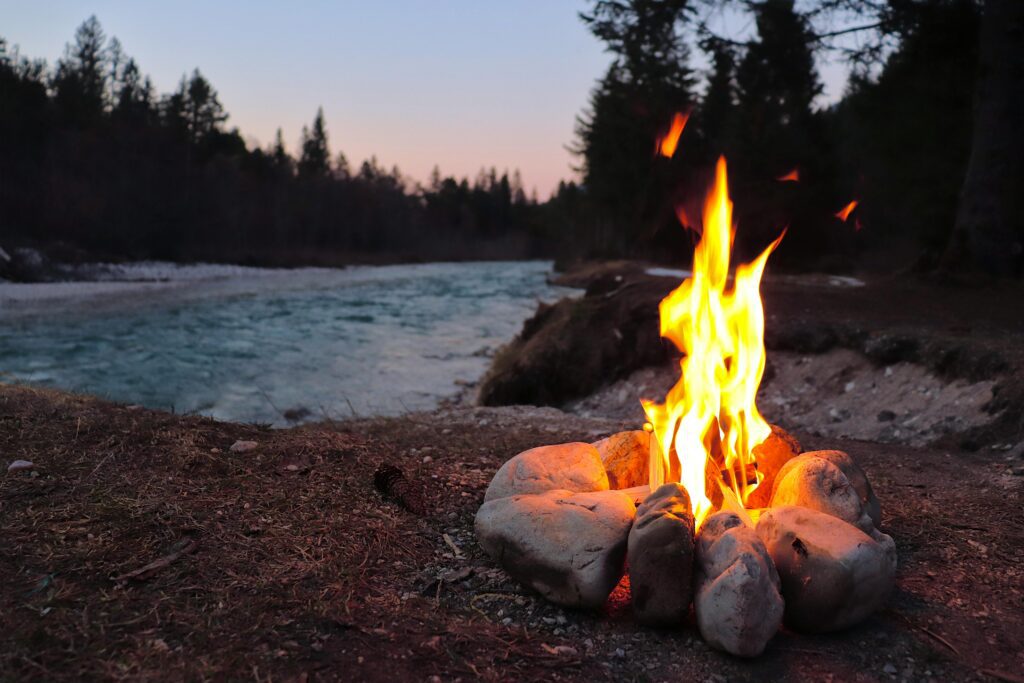Campfires in Minecraft are a versatile addition to any player’s world, offering light, cooking capabilities, and atmospheric charm. But a common question arises: can campfire travel through water blocks? Whether you’re designing an underwater base or managing a fire pit near a river, understanding how campfires interact with water is key.
This guide explores campfire mechanics, their behavior with water, and practical tips for 2025 gameplay. We’ll weave in supported keywords like Minecraft campfire mechanics, campfire water interaction, Minecraft underwater builds, and using campfires in Minecraft to enhance your gaming experience.
Understanding Campfires in Minecraft
Campfires, introduced in the 1.14 Village & Pillage update, come in two types: standard campfires (crafted with 3 sticks, 1 coal/charcoal, and 3 logs) and soul campfires (using soul sand/soil for turquoise flames).
They emit light (level 15 for standard, 10 for soul), cook up to four food items, and produce smoke signals, making them essential for using campfires in Minecraft. But what happens when water enters the equation? Let’s dive into Minecraft campfire mechanics to find out.
Can Campfire Travel Through Water Blocks?

The short answer is no, campfires cannot travel through water blocks in Minecraft. Campfires are stationary blocks that, once placed, remain fixed unless broken or extinguished. Water interacts with campfires in specific ways, impacting their functionality:
- Water Extinguishes Campfires: When a water block (from a bucket, flowing water, or rain) contacts a campfire, it extinguishes it, turning it into an unlit state. The campfire block remains intact, producing no flames or smoke but can be re-lit with a flint and steel, fire charge, or flaming arrow.
- No Movement Through Water: Campfires cannot be pushed, carried, or moved through water blocks by pistons, water currents, or other means. They are static blocks, unlike items or entities, per 2025 Minecraft Wiki data.
- Underwater Placement: You can place a campfire in a waterlogged block (e.g., a block with water source or flowing water), but it will immediately extinguish upon placement, creating an unlit campfire suitable for Minecraft underwater builds.
This campfire water interaction means water is a natural counter to campfire functionality, a key consideration for base design or survival scenarios.
How Water Affects Campfire Usage
Understanding campfire water interaction helps you plan your builds and gameplay:
- Extinguishing with Water: Pouring a water bucket or throwing a splash water bottle (crafted with a water bottle and gunpowder) on a campfire instantly puts it out. This is useful for quickly dousing flames near flammable blocks like wood or bee nests, as noted in a 2023 Minecraft forum post.
- Rain: In biomes with rain (e.g., plains, forests), campfires extinguish naturally unless covered by a solid block, like a roof. This makes outdoor fire pits tricky during storms.
- Waterlogged Blocks: Campfires can exist in waterlogged states (e.g., placed in a water-filled space), but they won’t burn or produce smoke, making them decorative for Minecraft underwater builds like ocean ruins or aquariums.
Practical Applications and Workarounds
While campfires can’t travel through water blocks, you can use their interaction with water creatively:
- Decorative Unlit Campfires: Place unlit campfires in waterlogged blocks for aesthetic underwater designs, such as sunken camps or ocean-themed builds. A 2024 Reddit thread highlights unlit campfires as popular for coral reef aesthetics.
- Re-lighting Options: After water extinguishes a campfire, re-light it using a flint and steel or fire charge. This is handy for temporary dousing during rain or near water sources.
- Nether Builds: In the Nether, where water buckets don’t work, use splash water bottles to extinguish campfires safely, supporting using campfires in Minecraft for Nether bases.
- Smoke Signal Control: Extinguish campfires with water to stop smoke signals, useful for avoiding detection in multiplayer or managing bee nest interactions.
Tips for Using Campfires in Minecraft

To maximize using campfires in Minecraft around water, consider these Minecraft campfire mechanics tips:
- Protect from Rain: Build a roof (e.g., slabs or full blocks) over outdoor campfires to prevent rain from extinguishing them, especially in survival mode.
- Use Silk Touch: Break campfires with a Silk Touch-enchanted tool to relocate them without losing the block, ideal for redesigning near water.
- Nether Safety: Carry splash water bottles in the Nether for quick campfire extinguishing, as water buckets evaporate, per 2025 Minecraft gameplay guides.
- Creative Water Builds: Incorporate unlit campfires into Minecraft underwater builds for thematic designs, like shipwrecks or submerged villages.
- Cooking Efficiency: Place campfires away from water sources to cook food (e.g., raw beef, potatoes) without interruption, as they cook four items at once without fuel.
Overcoming Challenges with Campfires and Water
Managing campfire water interaction can present challenges:
- Accidental Extinguishing: Avoid placing campfires near flowing water or in rainy biomes without cover. Use glass or slabs to shield them.
- Nether Limitations: Stock up on gunpowder and glass bottles for splash water bottles to manage campfires in waterless dimensions.
- Aesthetic Builds: For underwater designs, plan for unlit campfires and test lighting mechanics in creative mode to perfect your Minecraft underwater builds.
Why Understanding Campfire Mechanics Matters
Knowing can campfire travel through water blocks is vital for survival and creative players alike. With 1.21+ updates in 2025, campfires remain a staple for cooking, lighting, and ambiance, but their interaction with water shapes how you use them.
Whether you’re avoiding accidental dousing or designing an ocean monument base, mastering Minecraft campfire mechanics enhances gameplay. Posts on X in 2024 highlight campfires’ versatility, with players sharing underwater build ideas using unlit campfires.
Conclusion
So, can campfire travel through water blocks? No, campfires are static and extinguish when water hits them, but this campfire water interaction opens creative possibilities for Minecraft underwater builds. Use water buckets or splash bottles to douse flames, protect campfires from rain, and leverage using campfires in Minecraft for cooking or aesthetics.
With these Minecraft campfire mechanics tips, you’re ready to craft, build, and explore in 2025. Light up your world—or douse it strategically—and share your creations with #minecraftbuilds!
FAQs About Campfires in Minecraft
What blocks put out a campfire?
Water blocks (from buckets, flowing water, or rain) extinguish campfires, turning them unlit. No other blocks naturally put out campfires, but breaking them with any tool works.
Can campfire smoke go through trapdoors in Minecraft?
Yes, campfire smoke can pass through trapdoors, as trapdoors are transparent blocks, allowing smoke to rise and create signals up to 10 blocks high, per Minecraft mechanics.
Is it okay to put out a campfire with water?
Yes, using a water bucket or splash water bottle to extinguish a campfire is safe and effective; it leaves the campfire block intact for re-lighting later.
Can campfires in Minecraft burn other blocks?
No, campfires cannot burn or ignite other blocks, even flammable ones like wood or wool; they’re safe for builds but can damage players or mobs standing on them.

